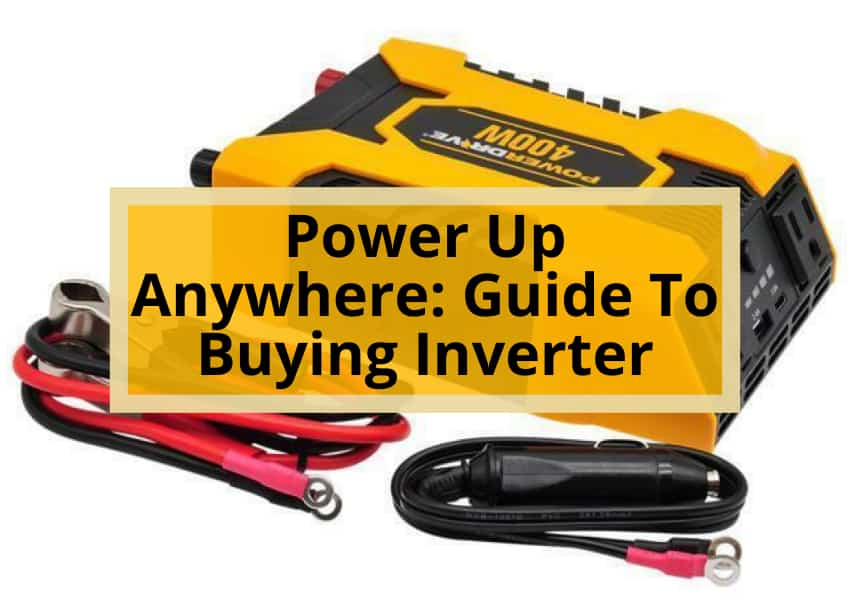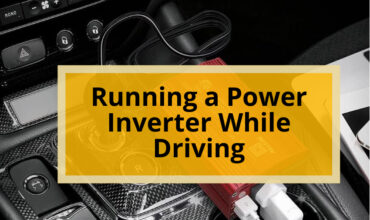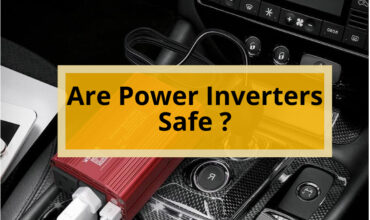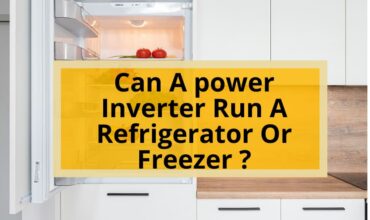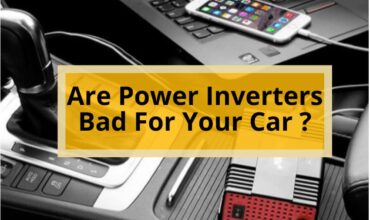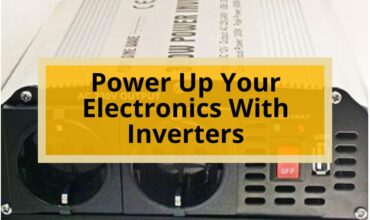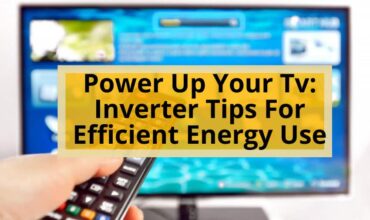Power outages and emergencies can happen at any time, leaving you without access to electricity. In such situations, a power inverter can be a lifesaver, providing you with a reliable and portable source of power.
Inverters are devices that convert DC power from a battery into AC power that can be used to run household appliances, electronics, and other devices. They are commonly used in vehicles, boats, and homes, and are an essential tool for anyone who needs to power up anywhere.
Choosing the right inverter can be a daunting task, as there are many factors to consider, such as the size of the inverter, the wattage of the devices you want to power, and the size of the battery bank.
In this article, we will provide a comprehensive guide to buying a power inverter, including tips on calculating the battery bank size and estimating the load and running time. Whether you’re planning a camping trip, preparing for a power outage, or simply need a reliable source of power on the go, this guide will help you choose the right inverter for your needs.
Inverter Basics
The basic functioning of an inverter, which involves converting DC to AC power, is an essential aspect to consider when buying an inverter for use in various settings such as vehicles or as a backup power source during power outages.
Inverter installation requires careful consideration of the load to be operated, as well as the battery bank size required to sustain the load. The inverter size selection depends on the wattage of devices to be operated simultaneously, and the electrical nameplate of each appliance should be checked to estimate the total load.
Maintenance tips for inverters include keeping the inverter clean and dry, ensuring proper ventilation, and regular battery maintenance. Traction batteries should be used for repeated discharge/charge cycles.
It is important to estimate the load and running time to calculate battery bank size, and DC Amps must be multiplied by the time in hours to calculate Amp Hour (A.H.) capacity.
By following these guidelines, individuals can ensure that their inverter functions properly and provides reliable power in a variety of settings.
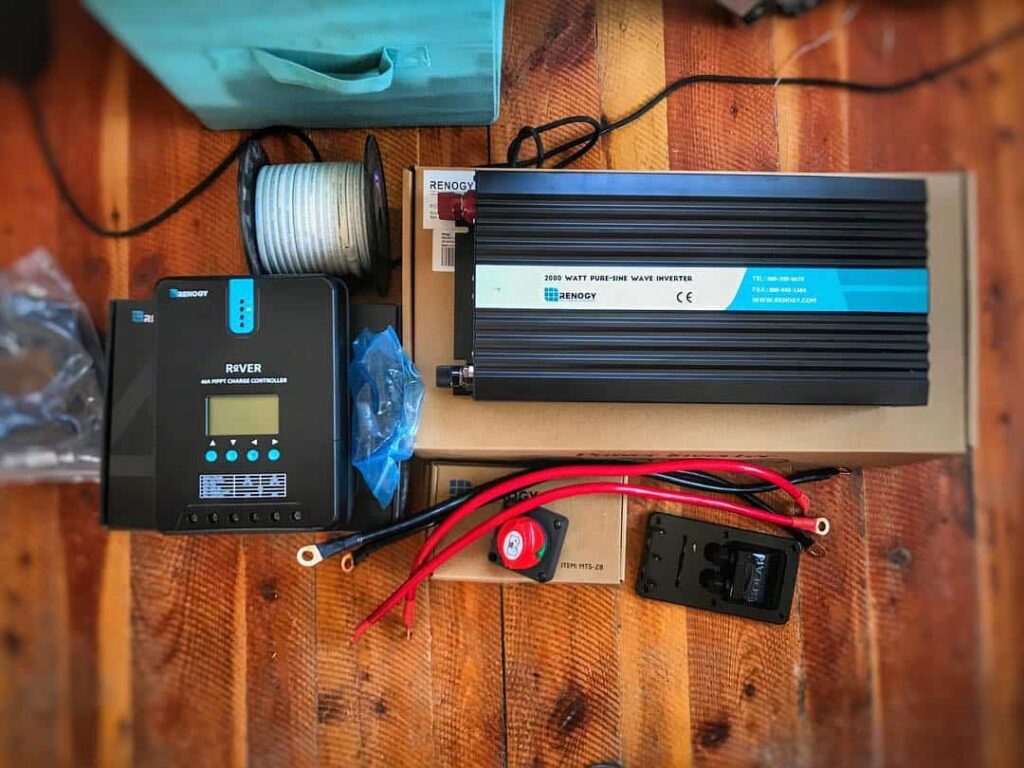
Inverter Size Selection
Estimating the required wattage of devices to be operated simultaneously is crucial when selecting the appropriate size of the inverter. Inverter size selection depends on the maximum wattage of all devices that will be running at the same time. To calculate the wattage, the electrical nameplate of each appliance should be checked.
Additionally, it is important to understand efficiency as it will impact the overall wattage required. For example, a device with a 1000W rating may only use 800W in practice due to efficiency losses.
It is also essential to note the difference in power requirements between 12V and 24V systems. A 100W load requires around 10 DC Amps from a 12V power inverter, while a 200W load requires around 10 DC Amps from a 24V power inverter.
The load and running time must be estimated to calculate the battery bank size needed. When determining the battery bank size, it is important to use traction batteries that can handle repeated discharge/charge cycles. By calculating the required Amp Hour (A.H.) capacity, the appropriate battery bank size can be selected.
also read : Benefits Of Portable Generators
Battery Bank Calculation
Calculation of the required Amp Hour (A.H.) capacity is necessary for selecting the appropriate size of the battery bank.
To calculate the necessary A.H. capacity, one must estimate the load and running time of the devices that will be powered by the inverter. This can be done by checking the electrical nameplate of each appliance and estimating the total load in watts.
The load in watts can then be divided by 10 for a 12V system or by 20 for a 24V system to get the number of DC amps required from the battery bank.
Once the necessary DC amps are calculated, they must be multiplied by the time in hours to determine the required Amp Hour (A.H.) capacity.
For example, a 1000W load in a 12V system would require 100A DC x 3 hours = 300 A.H. capacity. A 1000W load in a 24V system would require 50A DC x 3 hours = 150 A.H. capacity.
It is important to note that choosing the right battery type is crucial for the success of the battery bank. Traction batteries are recommended for repeated discharge and charge cycles, while deep-cycle batteries can be used for occasional use.
In summary, calculating power needs and choosing the right battery type are essential steps in determining the appropriate size of the battery bank for an inverter.
Frequently Asked Questions
What is the difference between a pure sine wave inverter and a modified sine wave inverter?
Pure sine wave inverters produce a smooth and stable waveform similar to that of mains electricity, making them suitable for sensitive equipment such as medical devices and audio equipment. Modified sine wave inverters produce an approximation of the waveform, causing some equipment to run less efficiently or not at all. The choice between the two depends on the equipment to be powered.
Can an inverter be used to power sensitive electronic devices such as laptops and medical equipment?
While inverters can provide emergency power, using them for sensitive devices like laptops or medical equipment has limitations due to potential power surges or waveform distortion. Careful selection of a pure sine wave inverter and proper grounding can reduce these risks.
Are there any safety precautions that should be taken when using an inverter, especially in a vehicle?
When using an inverter, safety measures and best practices should be followed, particularly when used in a vehicle. These include proper installation, grounding, and ventilation, as well as avoiding overloading and overheating, and using appropriate fuses and circuit breakers.
How long can a battery-powered inverter run before the battery needs to be recharged?
Like a flame burning out, battery-powered inverters lose efficiency as they discharge. Battery capacity and inverter efficiency determine how long a load can run before the battery needs recharging.
Are there any environmental concerns associated with using a power inverter, particularly in terms of battery disposal and replacement?
Battery disposal and replacement can have negative environmental impacts associated with power inverter use. Proper disposal and recycling of batteries can minimize these impacts and reduce pollution and waste.
